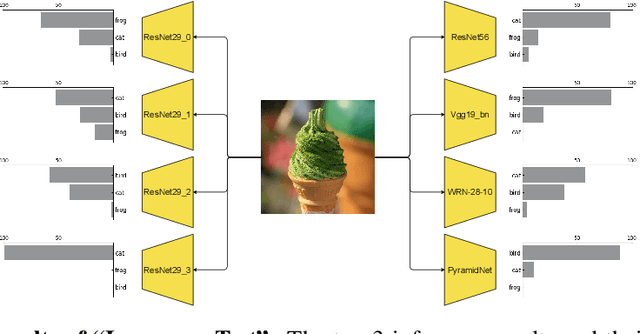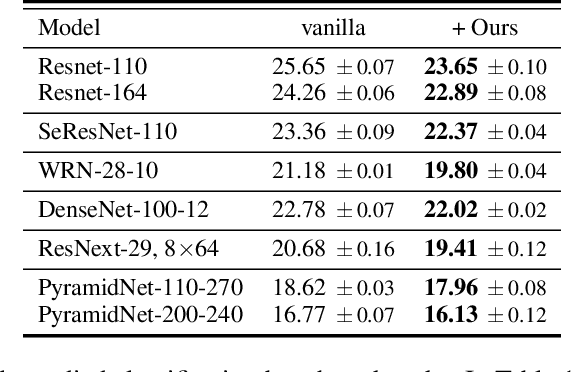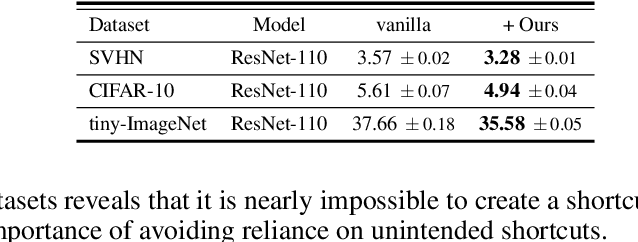White Paper Assistance: A Step Forward Beyond the Shortcut Learning
Paper and Code
Jun 08, 2021



The promising performances of CNNs often overshadow the need to examine whether they are doing in the way we are actually interested. We show through experiments that even over-parameterized models would still solve a dataset by recklessly leveraging spurious correlations, or so-called 'shortcuts'. To combat with this unintended propensity, we borrow the idea of printer test page and propose a novel approach called White Paper Assistance. Our proposed method involves the white paper to detect the extent to which the model has preference for certain characterized patterns and alleviates it by forcing the model to make a random guess on the white paper. We show the consistent accuracy improvements that are manifest in various architectures, datasets and combinations with other techniques. Experiments have also demonstrated the versatility of our approach on fine-grained recognition, imbalanced classification and robustness to corruptions.
 Add to Chrome
Add to Chrome Add to Firefox
Add to Firefox Add to Edge
Add to Edge